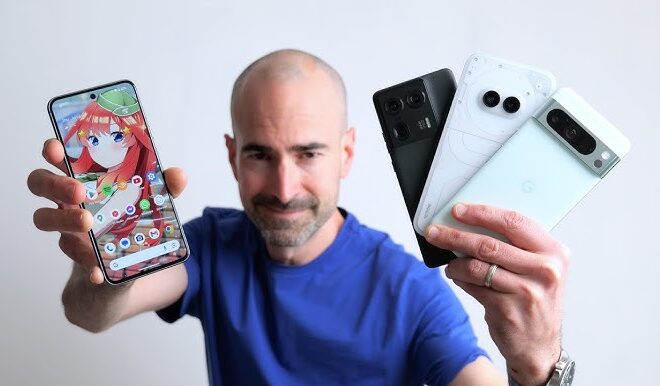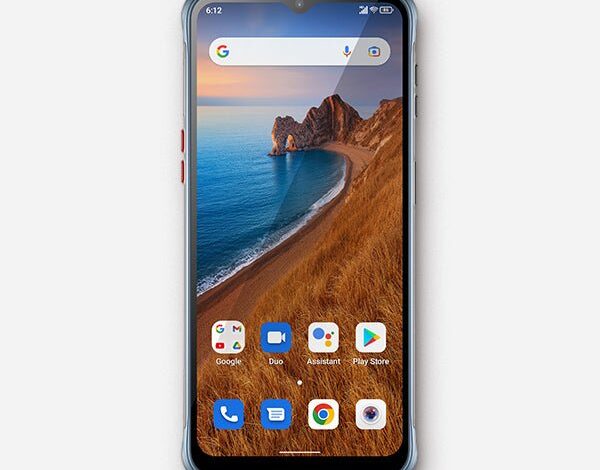
The ‘Plus’ Effect: Deconstructing the Rise of Mid-Cycle Upgrades in Android Phones
The world of Android phones has long been governed by a familiar, almost comforting rhythm: the annual release cycle. Each year, we anticipate the launch of a new Samsung Galaxy S, a new Google Pixel, a new flagship from OnePlus. This predictable cadence allows technology to advance, marketing campaigns to build, and consumers to plan their purchases. However, a disruptive new trend is taking hold, particularly in the hyper-competitive mid-range market. We are witnessing the rise of the mid-cycle refresh—iterative upgrades launched just six to eight months after an original model, often bearing a “Plus,” “Pro,” or “T” suffix. This strategy is more than just a minor tweak; it represents a fundamental shift in how manufacturers approach product life cycles.
This article delves deep into this growing phenomenon. We will dissect the strategic motivations driving companies to launch these enhanced variants, from maintaining market relevance to optimizing supply chain logistics. We’ll perform a technical breakdown of what these “Plus” upgrades typically entail, moving beyond marketing jargon to analyze real-world improvements in performance, camera technology, and battery life. Finally, we will explore the profound impact this has on consumers, creating both new opportunities for savvy buyers and potential confusion for the average person. For anyone following the latest Android News or in the market for new Android Gadgets, understanding this trend is crucial to making an informed decision.
The ‘Why’: Unpacking the Strategy of Iterative Upgrades
The decision to launch an enhanced version of a successful mid-range phone isn’t arbitrary. It’s a calculated business strategy rooted in the unique pressures of the modern smartphone market. Unlike the premium flagship space, where brand loyalty can be a powerful retainer, the mid-range segment is a fierce battleground where value, features, and timing are everything. Manufacturers employ mid-cycle refreshes for several key reasons.
Maintaining Market Momentum and Mindshare
The tech news cycle is relentless and has a notoriously short memory. A smartphone launched in February can feel like old news by August, overshadowed by a dozen new competitors. A mid-cycle refresh acts as a powerful marketing injection, thrusting the brand and product line back into the headlines. It generates fresh reviews, social media buzz, and YouTube comparisons, effectively giving the product a second launch window. This continuous presence is vital for staying relevant in the eyes of consumers who are constantly bombarded with information about the latest Android Phones. For instance, a device that made waves for its value at the start of the year can regain its “best-in-class” status with a timely processor or camera upgrade, fending off newer rivals that have since entered the market.
Leveraging Supply Chain Efficiencies and Component Evolution
Developing a new smartphone from the ground up is an immensely expensive and time-consuming process, involving extensive research, development, and tooling. A “Plus” variant cleverly bypasses much of this overhead. Manufacturers can reuse the core chassis, display assembly, and many internal components of the original model. The “upgrade” often comes from integrating newer components that have become more affordable or available in the months since the initial launch. For example, a new camera sensor from Sony or a slightly faster “Pro” version of a MediaTek Dimensity chipset might become available at a similar cost to the original parts. By incorporating these newer components into an existing design, a company can offer a tangibly better product with minimal R&D expenditure, passing the value on to the consumer while protecting their profit margins.
Segmenting the Market and Maximizing Price Points
Mid-cycle refreshes are a masterclass in market segmentation. A manufacturer can launch a base model at a highly aggressive price point (e.g., $349) to capture the budget-conscious segment and win stellar reviews for its value. Six months later, they can introduce a “Plus” model at a slightly higher price (e.g., $429). This new variant doesn’t replace the original; it complements it. It targets a different type of consumer—one who is willing to pay a small premium for better gaming performance, a more capable camera, or faster charging. This creates a tiered product family, allowing the brand to capture a wider spectrum of the market without developing two entirely separate devices. The original model may even see a price drop, solidifying its position as the value champion, while the “Plus” version becomes the new performance leader within the same lineup.
Anatomy of an Upgrade: What Really Changes in a ‘Plus’ Variant?

The “Plus” or “Pro” moniker promises a better experience, but what does that mean in technical terms? The upgrades are typically focused on a few key areas that deliver the most perceptible improvements for the user. While the core design and display often remain identical, the changes under the hood can be significant. Let’s break down the most common areas of enhancement using a hypothetical “Aura Phone 5” and its successor, the “Aura Phone 5 Plus.”
The Chipset: A Boost in Brains and Brawn
The System-on-Chip (SoC) is the heart of any smartphone, and it’s the most frequent target for a mid-cycle upgrade. The original “Aura Phone 5” might have launched with a capable mid-range processor like the MediaTek Dimensity 7050. Its “Plus” variant could be upgraded to a newer, more powerful chip like the Dimensity 7200 Pro or Qualcomm’s Snapdragon 7s Gen 2. This isn’t just about higher benchmark scores; it translates into tangible real-world benefits. Apps may load a few milliseconds faster, but the most significant difference is felt in demanding tasks. Gaming becomes smoother with more stable frame rates, and image processing from the camera is faster and more intelligent, leading to better photos in challenging conditions. This single component change can elevate the entire user experience from merely “good” to “great.”
Camera System Enhancements
The camera is a primary battleground for Android Phones, and it’s a prime candidate for a “Plus” upgrade. The improvement can take several forms. The most common is an upgraded main sensor. For example, the base model might use a reliable 50MP Samsung sensor, while the “Plus” version could feature a larger, more advanced 50MP Sony IMX-series sensor, renowned for its superior low-light performance. Another popular upgrade is the addition of Optical Image Stabilization (OIS), a feature often omitted from base mid-rangers to cut costs. Adding OIS dramatically reduces blur from hand shake, resulting in sharper photos and much smoother video. Sometimes, the upgrade isn’t to the main sensor but to the secondary lenses, perhaps replacing a token 2MP macro camera with a more useful and higher-resolution ultrawide lens.
Battery and Charging Technology
While a significant increase in battery capacity is rare due to the constraints of reusing the same chassis, charging speed is a frequent point of differentiation. The original device might offer a respectable 33W or 45W fast charging. The “Plus” variant can be a showcase for the company’s latest charging tech, bumping the speed up to 67W or even 80W. For the user, this is a highly practical upgrade. A phone that takes an hour to fully charge might now reach 100% in under 40 minutes. This reduces downtime and adds a layer of convenience that users appreciate daily, making it a very effective marketing tool.
For the Consumer: Opportunity or Confusion?
The proliferation of mid-cycle refreshes has a dual-edged impact on consumers. On one hand, it provides more choice and access to better technology faster. On the other, it can muddy the waters of an already crowded marketplace, making the purchasing decision more complex than ever before. Understanding both sides of this coin is essential for navigating the modern landscape of Android Gadgets.
The Paradox of Choice and Market Confusion
The traditional annual cycle created clear tiers. A Galaxy S23 was succeeded by a Galaxy S24; the choice was straightforward. With mid-cycle refreshes, the lines blur. A potential buyer is now faced with a more complex decision: Should they buy the brand-new “Phone X Pro” for $450, or the original “Phone X,” now discounted to $350? Is the newer chipset in the Pro model worth the $100 premium? Does the slightly better camera sensor justify the cost over the still-excellent camera on the original? This “paradox of choice” can lead to analysis paralysis, where consumers are so overwhelmed with similar options that they struggle to make a decision. The lack of clear naming conventions across brands further complicates matters, with terms like “Pro,” “Plus,” “S,” and “T” meaning different things for different manufacturers.
The Early Adopter’s Dilemma
One of the most significant psychological impacts of this trend is on the early adopter. Someone who enthusiastically purchased a new mid-range phone at launch might feel a sense of remorse when a superior “Plus” version is released just six months later for a marginal price increase. This can feel like a penalty for their brand loyalty and can erode trust over time. They are left with a device that is “outdated” far more quickly than the traditional 12-month cycle would suggest. This rapid obsolescence can push consumers to either wait longer before purchasing or become more hesitant to commit to a new device at its launch price, potentially disrupting established buying patterns.

The Savvy Buyer’s Opportunity
Conversely, for the patient and informed consumer, this trend is a goldmine of opportunity. The launch of a “Plus” model almost invariably triggers a significant and permanent price drop for the original version. This creates an incredible value proposition. A phone that was already a great deal at its $399 launch price might become an unbeatable bargain when it drops to $299 to make room for its $479 successor. For buyers whose needs are perfectly met by the original model, this is the ideal time to buy. Furthermore, the “Plus” model itself offers a chance to get near-flagship features—like a better processor or OIS—at a price point well below premium devices. The savvy buyer can analyze their specific needs and choose the exact point of price-to-performance that suits them best, a level of granular choice that simply didn’t exist a few years ago.
Making the Right Choice: Tips for Navigating Mid-Cycle Releases
In a market filled with iterative upgrades, becoming an informed consumer is your greatest asset. Instead of being overwhelmed, you can leverage this trend to your advantage. Here are some practical tips and best practices for choosing the right device.
Tip 1: Define Your Personal Priorities
Before you even start looking at spec sheets, define what matters most to you. Are you a mobile gamer who needs the smoothest possible frame rates? If so, the chipset upgrade in a “Plus” model is a priority. Are you a parent who primarily uses their phone to capture family photos? Then a superior camera sensor or the addition of OIS is worth the extra cost. Do you have a long commute and rely on your phone for media? Perhaps faster charging is the killer feature for you. By creating a short list of your non-negotiable features, you can quickly determine if the specific upgrades of a “Plus” model align with your actual usage.
Tip 2: Scrutinize the Spec Sheet, Not the Name
Do not be swayed by marketing terms alone. “Pro” and “Plus” are just labels. The real story is in the technical specifications. Place the spec sheets of the original and the refreshed model side-by-side. Look at the exact model numbers of the processors (e.g., Snapdragon 7 Gen 1 vs. 7+ Gen 2) and camera sensors (e.g., Sony IMX766 vs. IMX890) and research their specific differences. A 108MP camera isn’t necessarily better than a 50MP one if the latter has a larger sensor and better processing. Being detail-oriented is key to understanding the true value of an upgrade.
Tip 3: Analyze the Price-to-Performance Ratio
The most crucial calculation is whether the upgrades justify the price difference. If a “Plus” model costs 30% more than the now-discounted original, does it offer a 30% better experience for your use case? A 15% boost in a synthetic benchmark might not be noticeable in daily use. However, going from 33W to 80W charging is a highly noticeable quality-of-life improvement. Assign a personal value to each upgrade and decide if the total package is worth the extra investment over the excellent value presented by the older model.
Tip 4: Verify the Software Support Window
This is a critical, often-overlooked factor. Does the new “Plus” model come with a promise of longer software support (e.g., an extra year of Android OS updates or security patches)? Or does it fall into the same support window as the original model, meaning its support will end at the same time? If the software support is identical, the long-term value of the newer device is diminished. A phone with a longer support runway is a better investment, ensuring it remains secure and functional for years to come. Always check the manufacturer’s official software update policy for the specific models you are considering.
Conclusion: A New Norm for the Android Market
The rise of the mid-cycle “Plus” variant is more than a passing fad; it’s a strategic evolution in response to the fierce dynamics of the mid-range Android market. For manufacturers, it’s an intelligent way to maintain momentum, maximize component efficiency, and capture a wider audience without the massive cost of a full redesign. This trend reshapes the landscape, creating a more fluid and continuous stream of product releases that blurs the lines of the traditional annual cycle.
For consumers, this new paradigm demands a more thoughtful approach. It introduces potential for confusion but also presents unparalleled opportunities for value. By moving beyond marketing hype and focusing on personal priorities, detailed specifications, and the crucial price-to-performance ratio, buyers can navigate this complex market with confidence. As competition intensifies, the “Plus” effect will likely become even more prevalent. The key takeaway for anyone invested in the world of Android News and Android Gadgets is clear: the era of patient, informed consumerism is here, and those who adapt will be rewarded with better technology at a better price.



